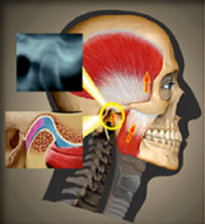Humans spend almost 30% of their lives sleeping. In the past several decades the medical community has begun to appreciate that there are a number of detrimental consequences of sleep disturbances that result from abnormal breathing patterns, or sleep-disordered breathing (SDB). Among these, sleep apnea and other sleep-related breathing disorders represent a significant proportion of sleep disorders seen by physicians in the areas of sleep medicine and pulmonology, as well as by general practitioners. There are significant health issues related to sleep disordered breathing.
SDB includes several sleep-related breathing abnormalities that are related to increased upper airway resistance, including snoring, upper airway resistance syndrome (UARS), and obstructive sleep apnea-hypopnea syndrome (OSAHS). SDB is generally considered to be a spectrum of diseases. Thus, a person who snores may be exhibiting the first manifestation of SDB and, therefore, until SDB has been ruled out, snoring should not be viewed as no more than a normal social issue. A patient with the early manifestations of SDB may move gradually through the continuum. For example, weight gain or alcohol or sedative use can cause a person who snores to turn into a snorer with obstructive sleep apnea (OSA).
In addition to several significant health risks, SDB is a major contributor to day-time drowsiness. The implications of this are important as related to drowsiness when driving. A recent study indicates that in motor vehicle accidents, a person with sleep apnea is 2.5 times more likely to be the driver of the vehicle. Many such accidents involve fatalities. Read more at “Drowsy Driving”.
Continuous positive airway pressure (CPAP) has been shown to effectively treat apnea. However, there are clear compliance issue with CPAP with some patients. Some find the use of CPAP, itself, contributes to difficulty sleeping. And studies have found that many CPAP users, who may initially have been able to use it, have eventually discontinued its use, leaving them more vulnerable to the associated health risks.
Within the past decade the American Academy of Sleep Medicine has recognized that an oral appliance that holds the jaw forward during sleep, thus opening the airway, can be an effective treatment option for mild to moderate OSA, as an alternative to CPAP. These oral appliances, in addition to being effective, are easily adapted to by most patients. Read more at “Dental Treatment for Sleep Disorders“.

